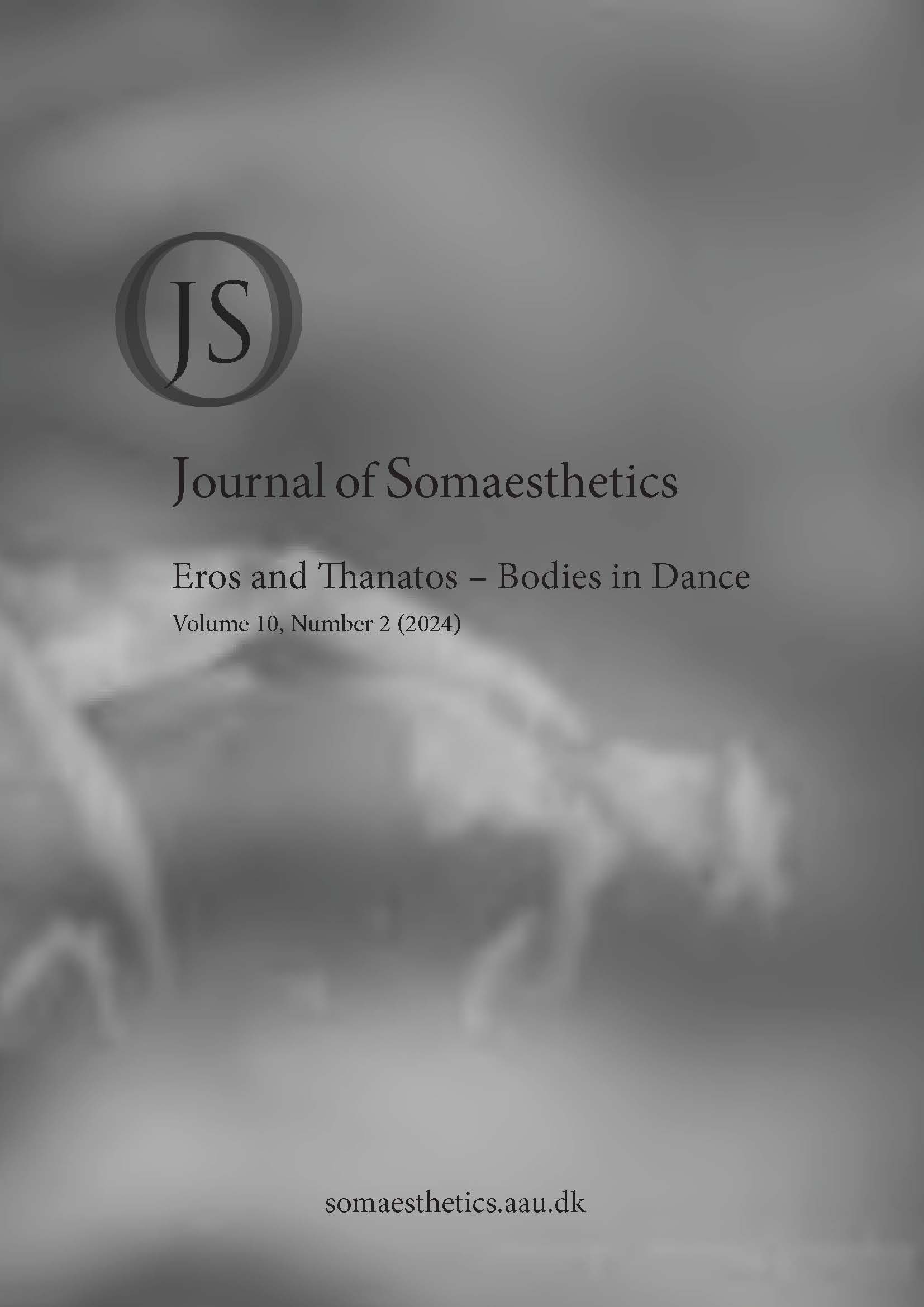Vol. 10 No. 2 (2024): Eros and Thanatos - Bodies in Dance

If eros designates those generative impulses within us that affirm and preserve life, and thanatos the latent drive toward death and dissolution, then how might we interrogate these antithetical yet entwined forces through the lens of somaesthetics? The term flesh—as distinct from body—invites us to reflect upon the ceaseless tension and intimacy between eros and thanatos: a dialectic in which vitality and finitude, desire and decay, define and delimit one another. In contrast, the notion of body—objectified, dissectible, the concern of biomedical inquiry—lacks this existential resonance. Most significantly, somaesthetics, in naming the soma, invokes neither the inert body nor the theological connotations of the flesh, but rather the lived, perceptive, and purposive corporeality of human existence.
As Shusterman (2014) clarifies, soma is preferred precisely “to avoid problematic associations of body (which can be a lifeless, mindless thing) and flesh (which designates only the fleshly parts of the body and is strongly associated with Christian notions of sin)” and to underscore that the somaesthetic project “concerns the lived, sentient, purposive body rather than merely a physical body.” The contributions to this special issue, then, constitute an exploration of the tension and interrelation between eros and thanatos through a distinctly somaesthetic prism—with dance, as a privileged modality of embodied expression, occupying a central position.

